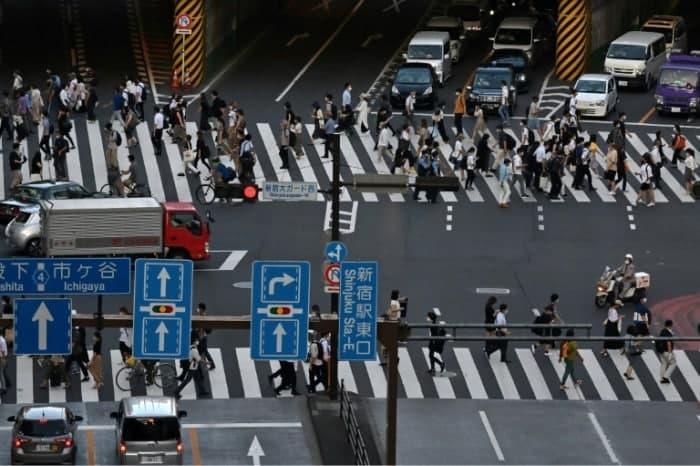TOKYO, Feb. 15 (Japan Times) - Japan’s economy contracted 4.8% in real terms in 2020 from the previous year amid the novel coronavirus pandemic, for the second sharpest margin of contraction on record, government data showed Monday.
Real gross domestic product, the total value of goods and services produced in a country adjusted for inflation, marked the first decrease since it shrank 5.7% in 2009, the biggest contraction since data began to be compiled in 1955, according to the preliminary information released by the Cabinet Office.
The negative growth in 2009 was logged in the wake of the global financial crisis.
Last year, private consumption fell 5.9% mainly due to stay-home requests under the government’s nationwide state of emergency over the virus in spring.
Many major cities abroad entered hard lockdown, dampening demand for products such as cars and reducing Japan’s exports by 12.3%.
On a quarterly basis, meanwhile, GDP in the October-December period grew a real 3.0%, or an annualized 12.7%, from the previous quarter as the world’s third-largest economy continued to experience a strong recovery from a pandemic-induced slump.
Following an annualized 22.7% expansion in the previous three-month term, GDP grew by double-digit percentage for the second straight quarter, after the virus emergency caused it to shrink an annualized 29.3% in the April-June period, the largest on record.
While the virus is seen pushing the economy back into contraction this quarter, the strong performance at the end of 2020 suggests the recovery could return to a relatively solid footing once the country ends a state of emergency that now covers Tokyo and Japan’s other big cities.
“It looks like business spending is finally being drawn out as a result of the exports recovery,” said economist Hiroaki Muto at Sumitomo Life Insurance Co. “The first quarter will decline again, but we’re on a recovery trend.”
Last quarter’s growth was driven by improved trade, especially with China, the strongest expansion in business investment in more than five years and a rise in household spending helped by government subsidies for travel and eating out.
How long the state of emergency lasts is a key factor for the outlook. Falling case numbers offer hope that restrictions might be lifted in some areas before March 7, the planned end date, but with hospital capacity still stretched that decision has yet to come. Japan’s vaccine drive isn’t set to start until Wednesday.
The Bank of Japan will be looking closely at the consumer spending and capital investment figures to gauge the strength of domestic demand at the end of 2020. The BOJ in January trimmed its forecast for the economy this fiscal year, but boosted its projections for the following years, as it heads toward a policy review set for March.
